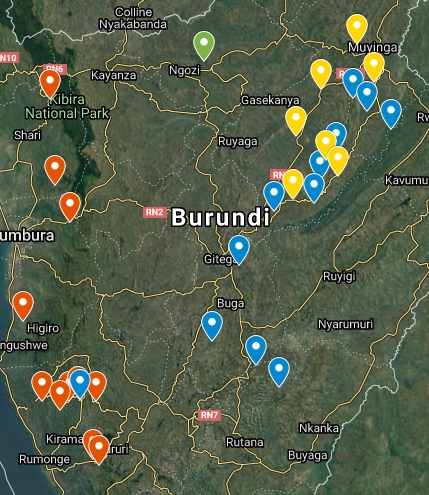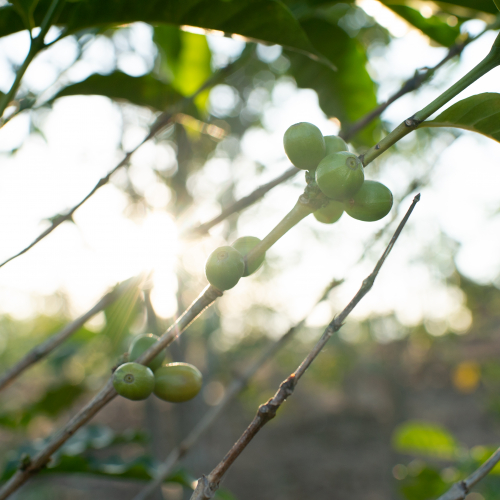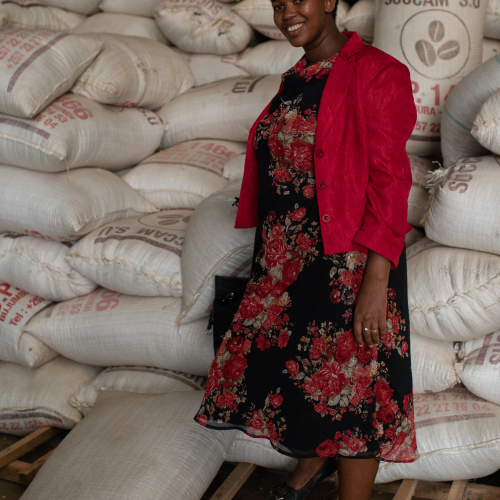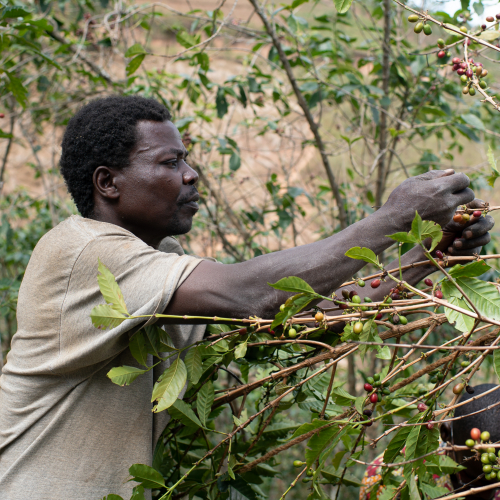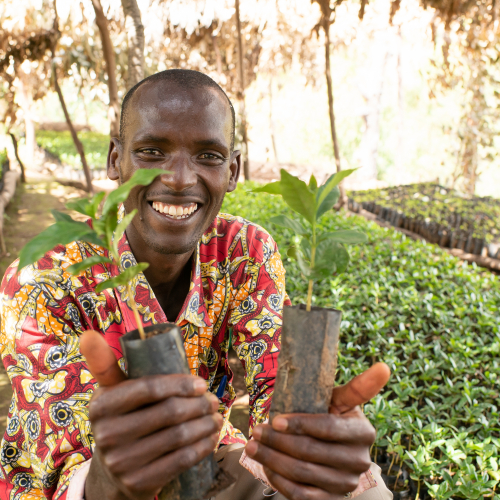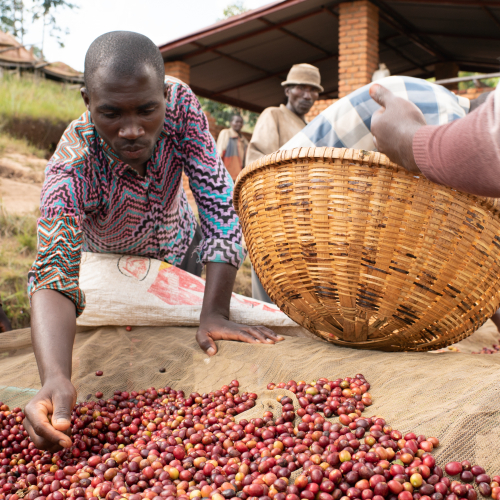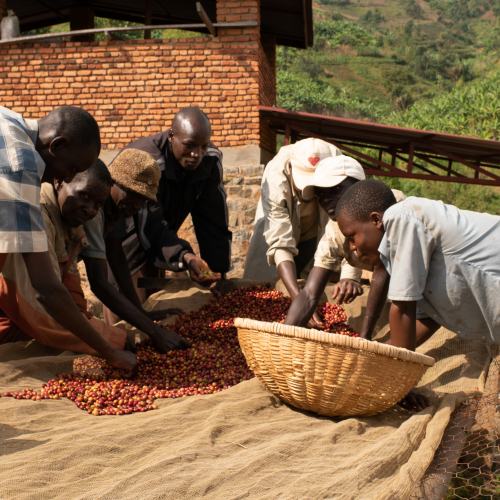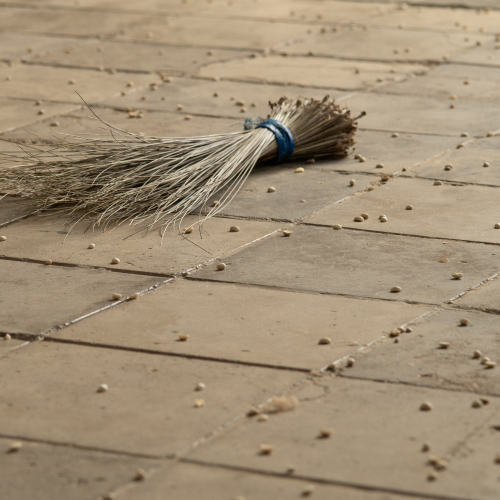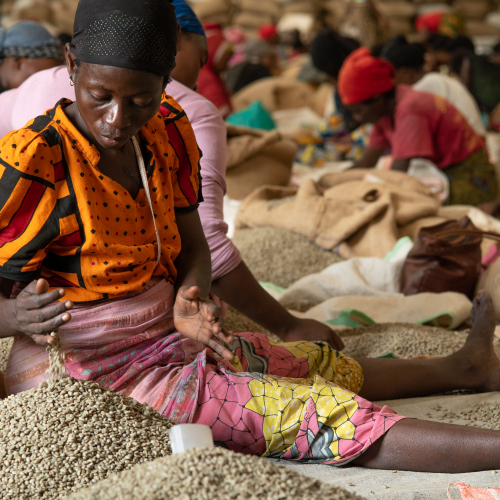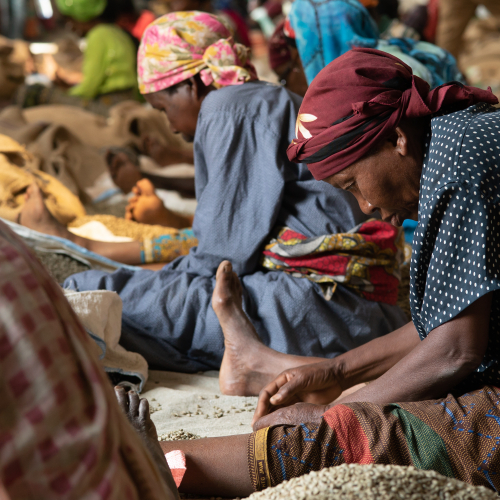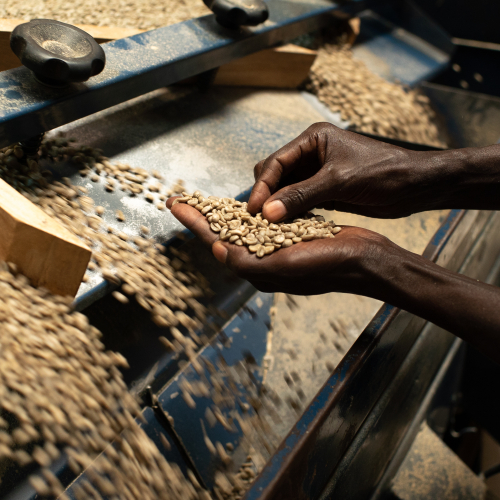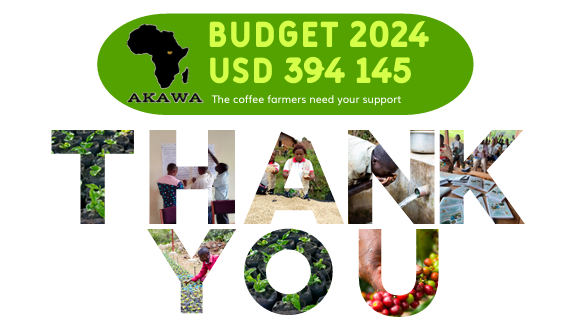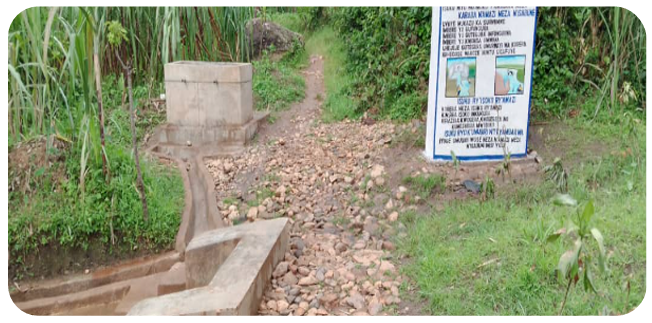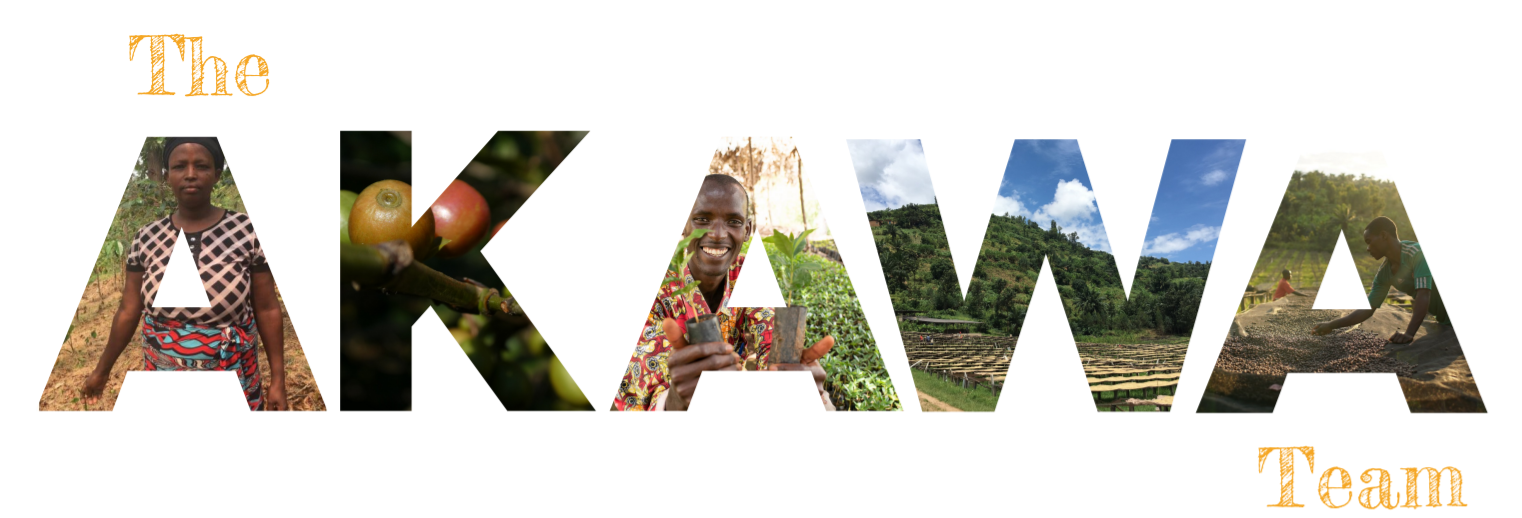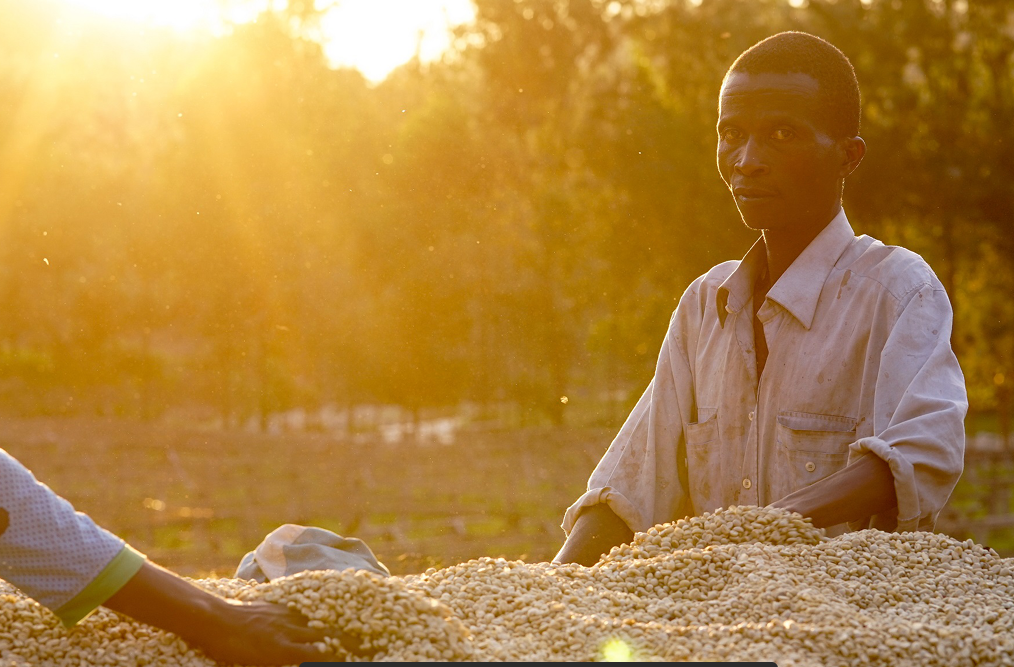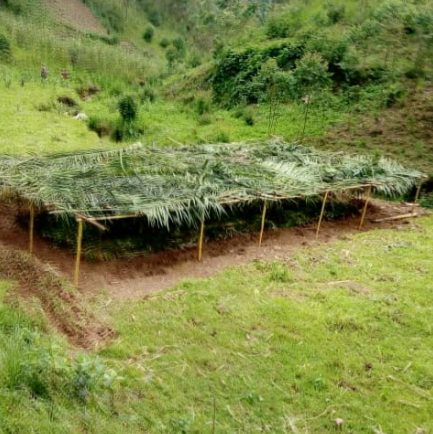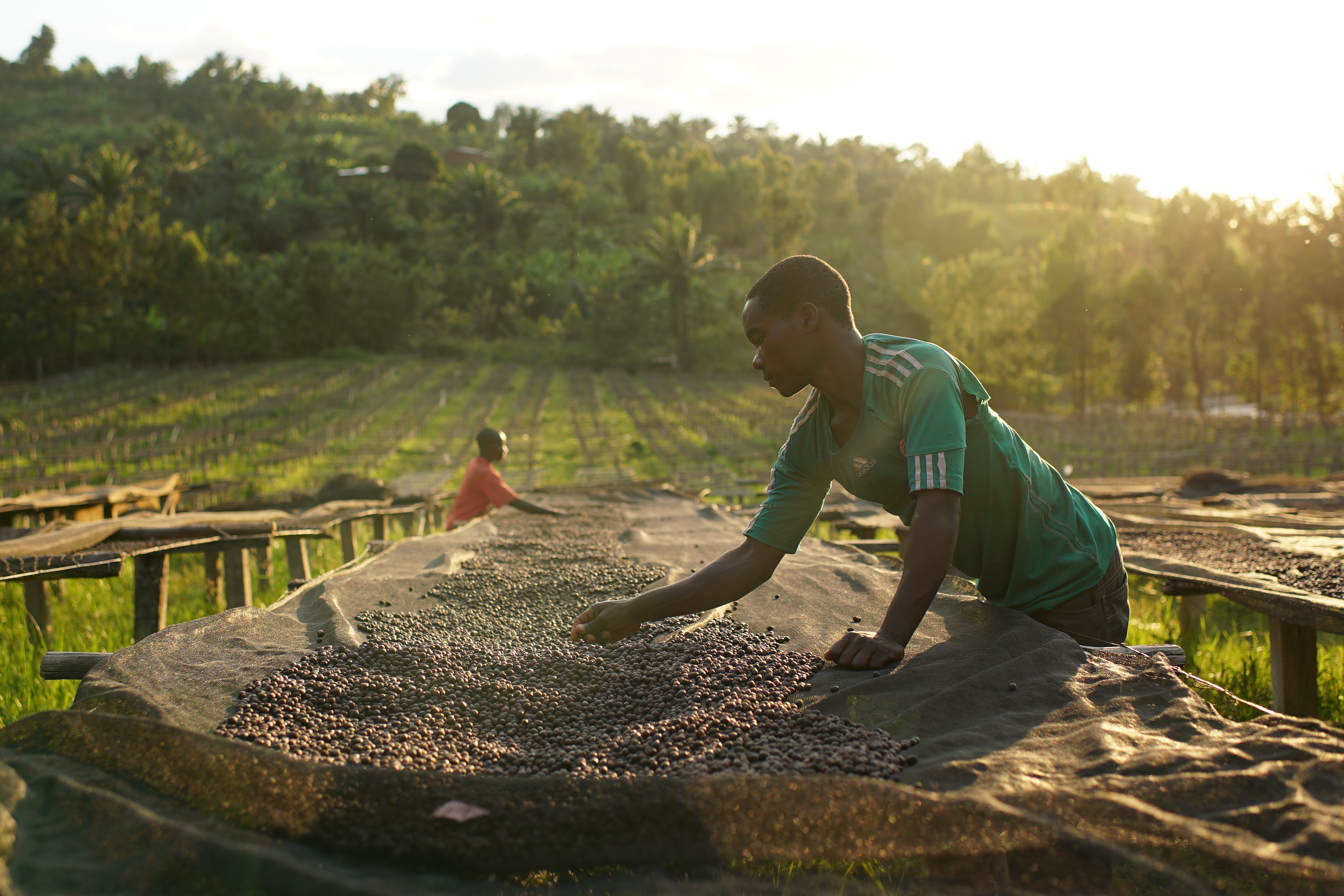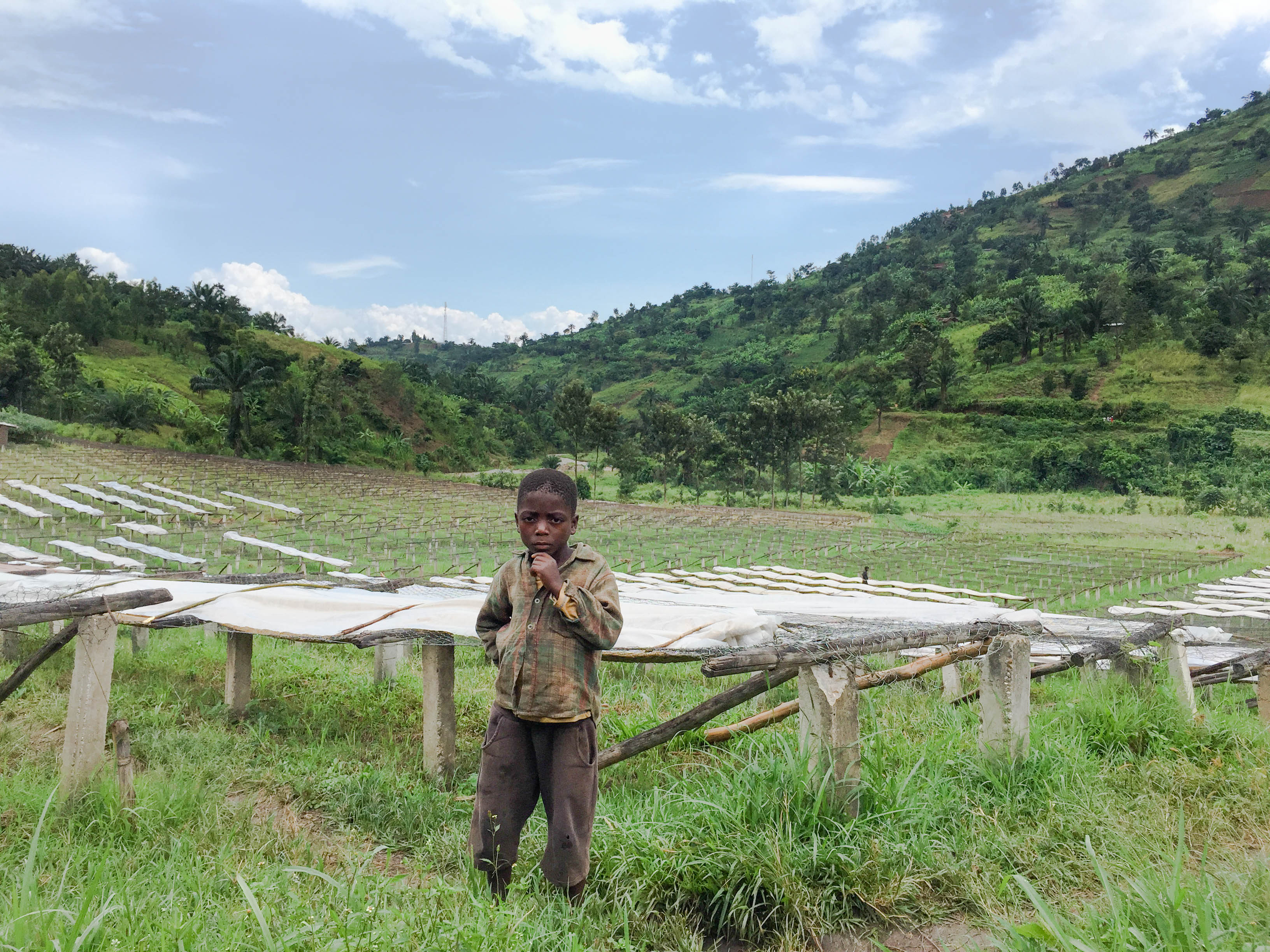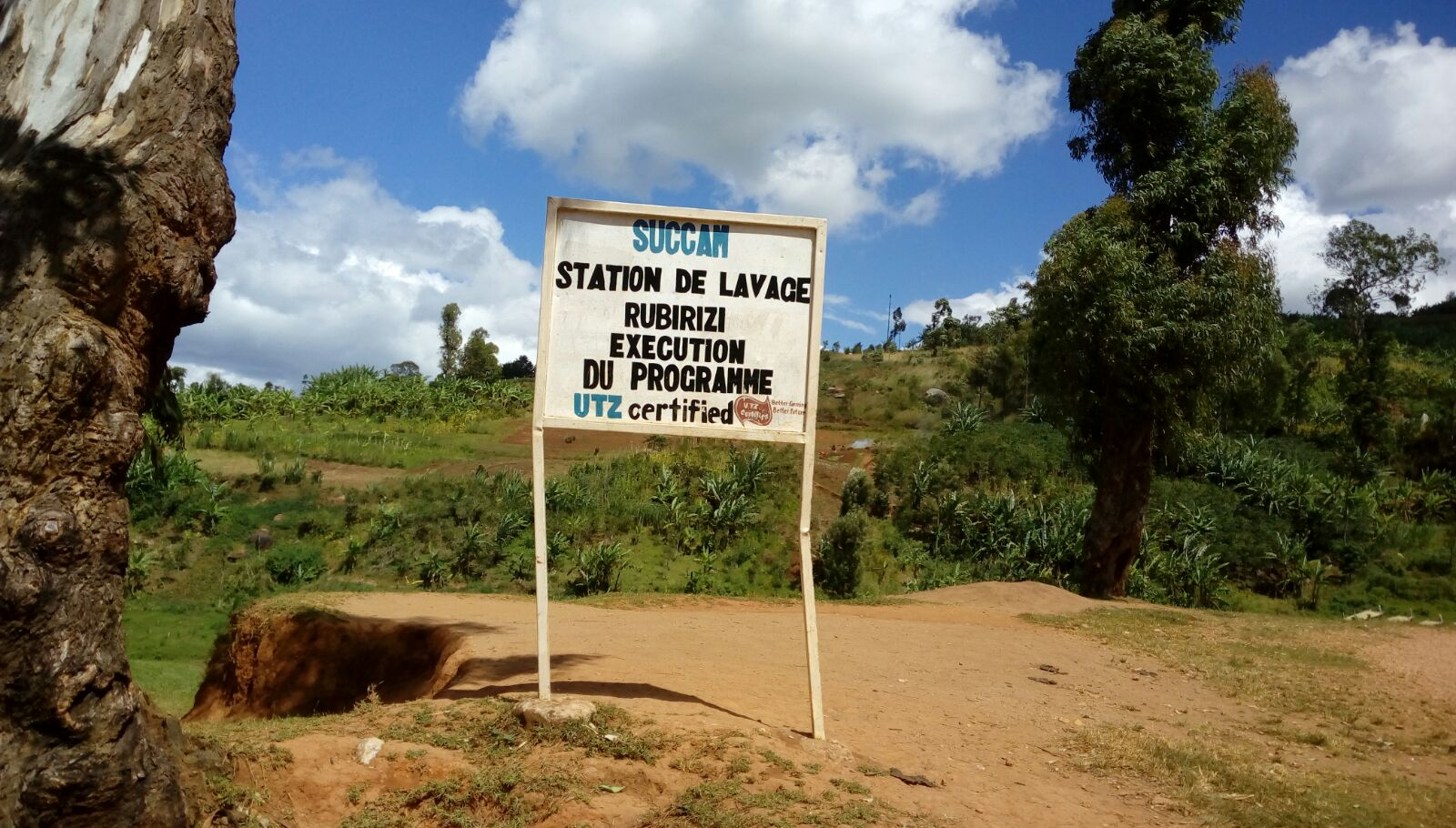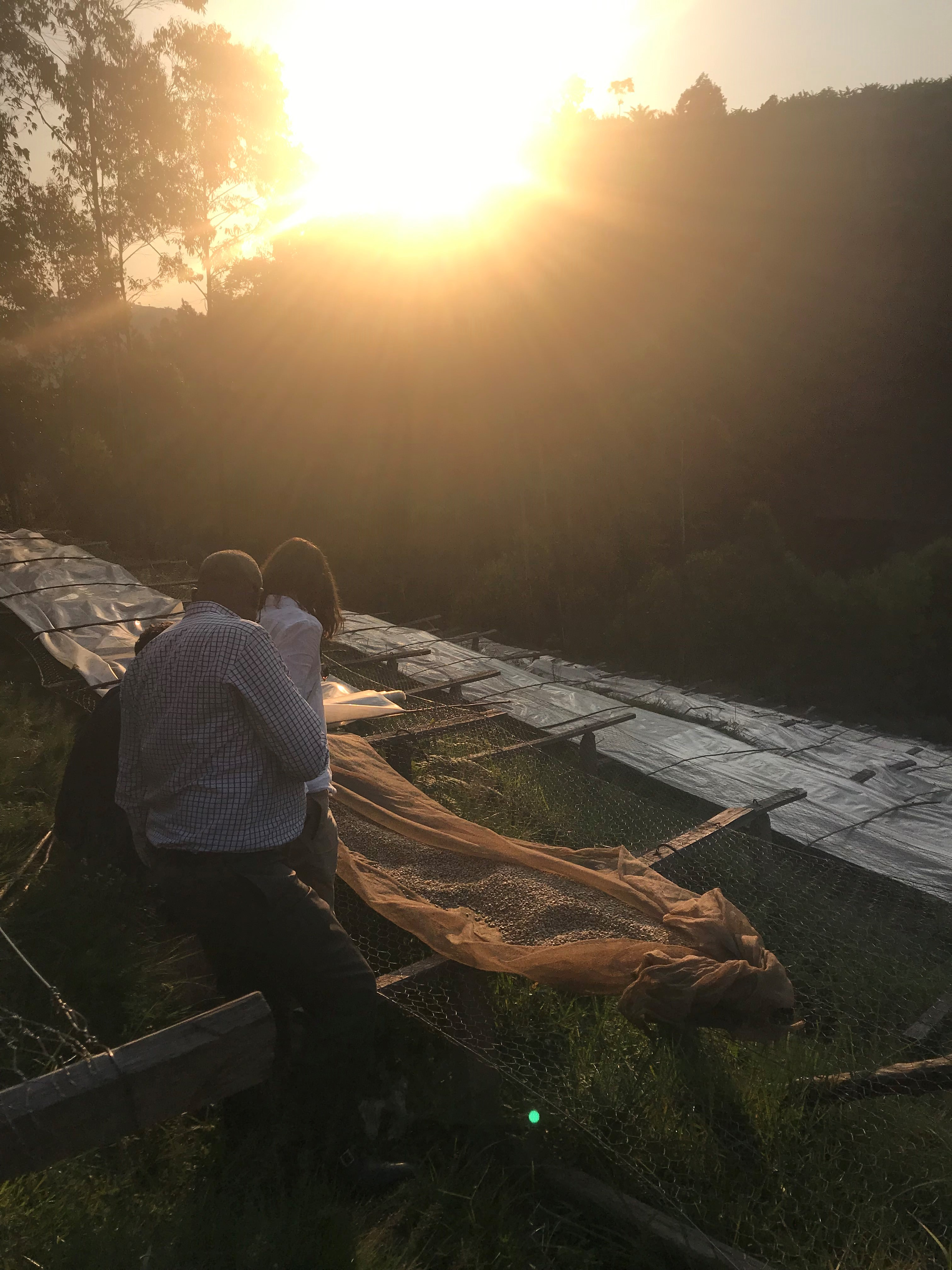Burundi
Did you know?
About
The tiny but populated East African state of Burundi borders Rwanda, Congo, Tanzania and lake Tanganyika. It is hilly with high plateaux and a tropical climate. Burundi is so far thankfully exempt from problems with water shortage and drought which is becoming common in East Africa. The soil is generally very rich and mainly volcanic with limited agriculture pressure.
Burundian economy relies upon subsistence farming, gold (1), coffee (2) and tea (3) exports. Foreign aid being still a major source of revenue, dwindling since the re-election of President Pierre Nkurunziza in 2015. The 10th President of Burundi is Évariste Ndayishimiye, since June 18 of 2020, as successor to Pierre Nkurunziza who died in 2020
Coffee has been introduced in Burundi in the 1920’s and started to expand in the 50’s as it was recognized as a crop that would bring about an agrarian revolution for Burundi producers, who will then access money generation and not only food supplies. The Coffee industry starts in the 60’s very much organized as a public industry, with government involved in both institutionalizing and operating the business of supply exportable coffee to the import industry. Indeed a coalition of States fund the development of the infrastructure and indirectly a subsidized production, in the scope of supporting Burundi population in its economic development process. In the 90’s heavily indebted Burundi government in a deal with FMI to clean the debt surrender the industry of coffee and opens it to free trade, selling assets and allowing provates to take part in the processing of coffee. This is pretty much the end of the government support to coffee industry in Burundi, definitely the end of the subsidy Burundi farmers were enjoying in low market circumstances, BIF630/kilo of cherry was indeed a minimum price for over 40 years for the first generation of Burundi Coffee farmers.
Mainly Arabica
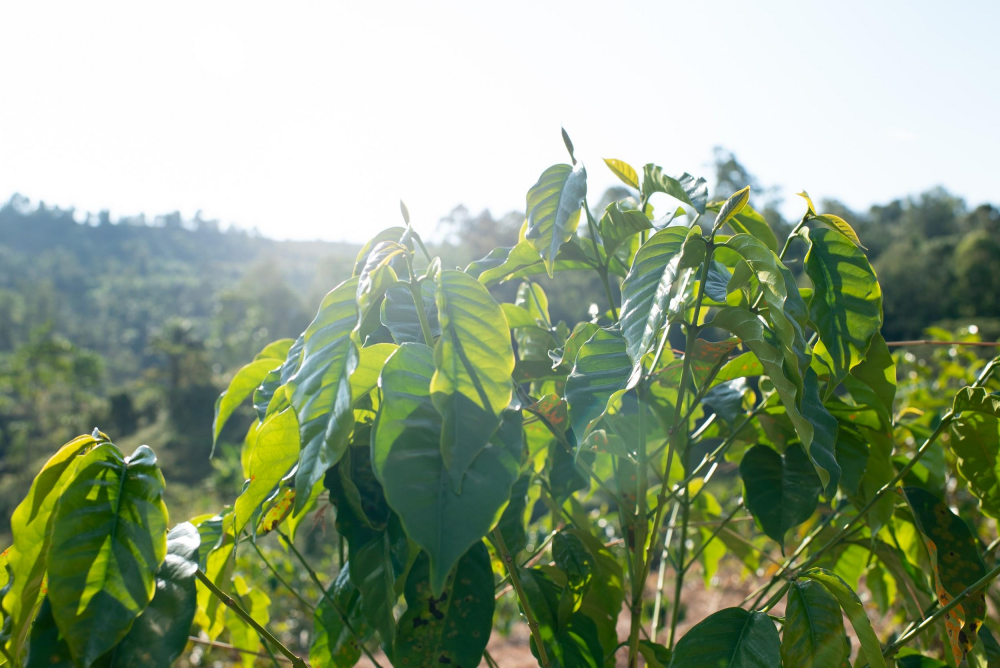
Burundi produces mostly Arabica (± 96%) and a very small percentage of Robusta (± 4%).
In recent years the export of Fully Washed coffee has overcome the Semi Washed export volumes. A turn as historically Burundi produces 70% Semi-Washed and 30% Fully Washed, in 2018 the trend is reversed now we can safely assume not more than 25% of coffee is processed as Semi-Washed. This is part of a greater scheme from government to incentivize the production of better coffees for better returns.
The flow of coffee is different for both types of qualities: The Fully Washed quality comes from coffee picked by the growers when mature and delivered to the nearest washing station. These washing stations are spread in the rural part of the country. Every coffee growing area has a station on its area, which is also a place for encounter and exchange; only some sub-regions have greater coverage than others. Coffee is pulped, fermented and washed in small Washing Stations (capacity about 500MT per annum each) and dried on African beds then stored in dry parchments at the washing station until enough is gathered to send to dry mill for hulling, grading and sorting for export. Once the milling is done, and coffee approved by ARFIC (National coffee institution) each export lot is stored in a state owned warehouse in Gitega or Bujumbura.
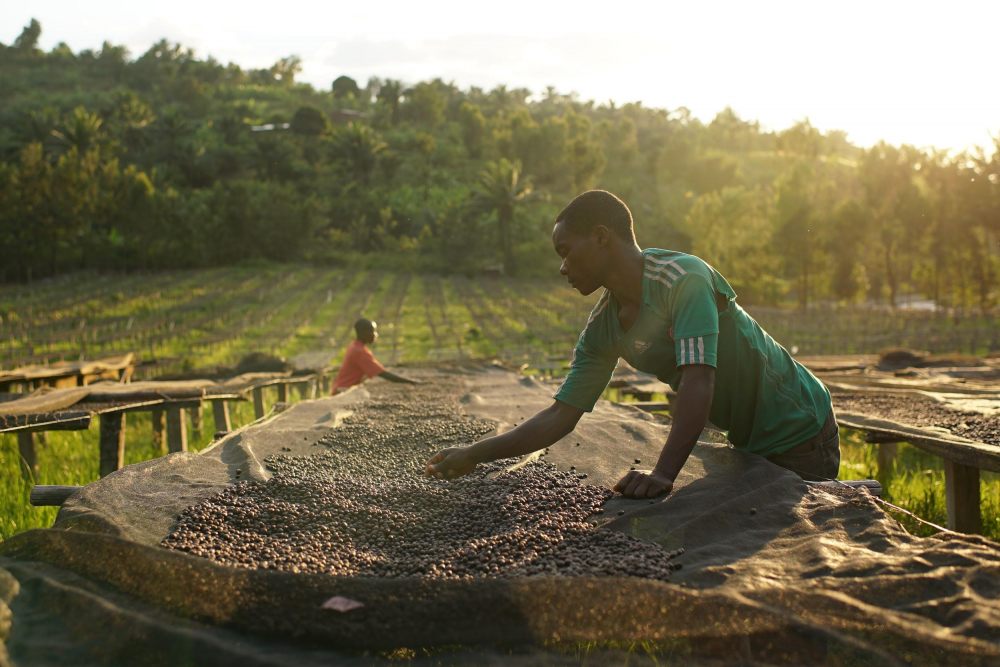
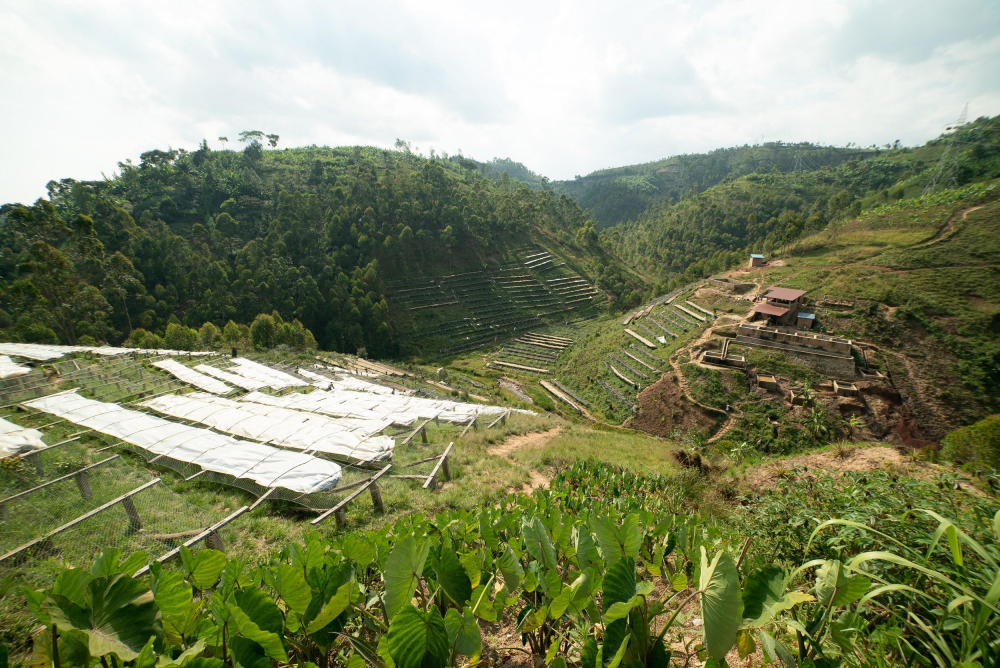
The so-called Washed (or semi-washed) quality is coffee which is depulped, washed and dried at farmer’s place. There is no controlled fermentation in this process. Coffee is exported through same channels as Fully Washed, although a good share is smuggled or locally consumed. Semi- Washed is of lesser quality and value than Fully Washed, hence the recent development of Fully Washed as Burundi gets more and more exposure to world consuming markets.
Fully Washed coffee ships earlier than Semi-Washed coffee. Mainly because farmers use the Semi-Washed product as cash under the mattress they can spend on a monthly basis after the harvest season. When they sell Cherry farmers get all the revenue at once, as it needs to be delivered from the same day harvest.
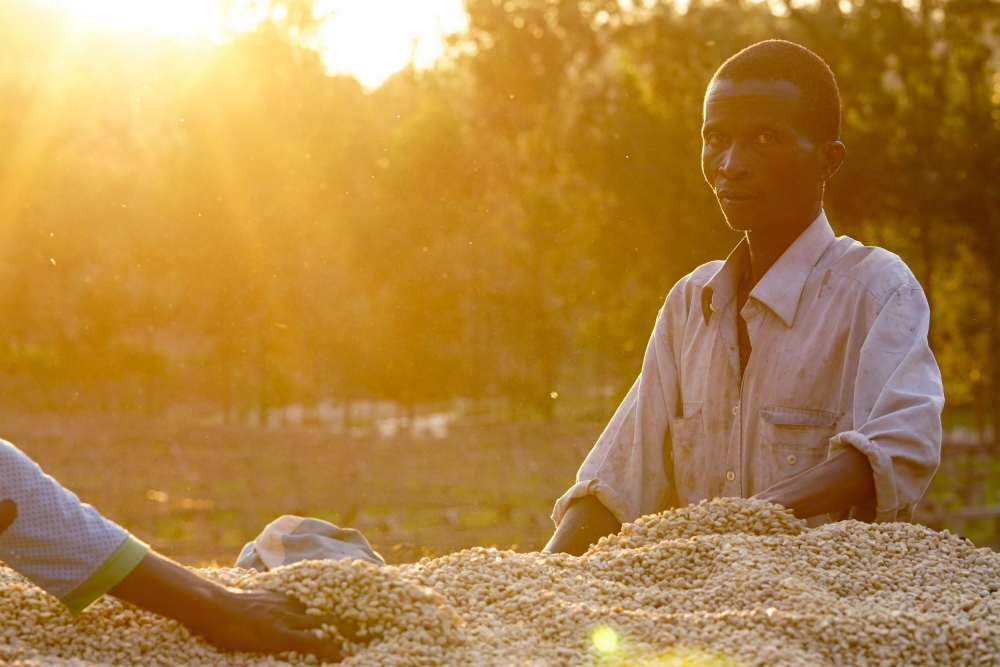
Coffee facts
Bags of 60 kg
Crop Periods
Flowering Period
|
Main : From October until November |
Harvest Period |
|
Main : From March until July |
Shipping Period |
| from September until March |
Ports of Shipment
| Transit days |
Imp. |
EU |
US |
|
Dar-Es-Salaam (1) |
95% |
21 |
32 |
|
Mombasa |
4% |
21 |
32 |
|
Durban (2) |
1% |
15 |
20 |
(1) Burundi is a landlocked country. Coffee transits mainly by truck. The transit time is approximately two weeks provided the infrastructure is operational, which is not always the case.
(2) The South-African route is long and expensive and was only used occasionally, in this case, the coffee went through Tanzania, Zambia and Zimbabwe before getting into South-Africa.
Destination countries
1. Germany
2. France
3. USA, Belgium, Switzerland, UK, The Netherlands
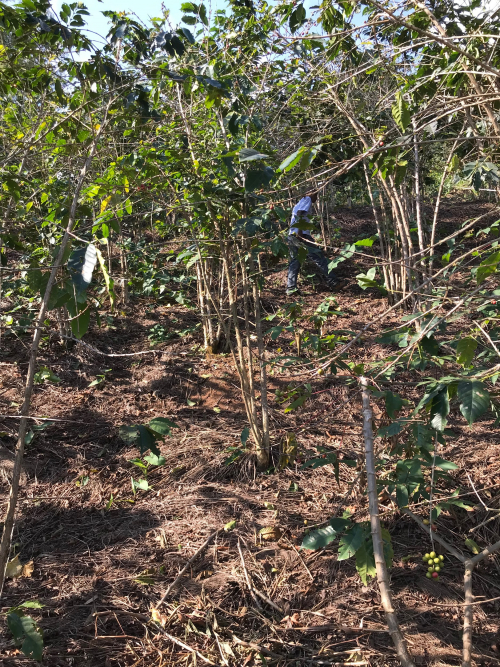
Nice to know
Average production per hectare is about 4 bags, average size of a farm is about a quarter of an Ha, average farmer produce one export bag per year.
Productivity is very poor and demographic pressure is very high, farmers have limited access to fertilizer, trees material and technique and access to land is also a big constrain. Did you know that 85% of coffee trees in Burundi are over 20 years old?
All this contributes to high volatility in productivity from one season to the next. Up production cycles are usually followed by drastically low production cycles.
There are some initiatives on the ground, aiming at breaking the cycle of poverty Burundi farmers experience. Most in their infancy still and need support to have long term and wider impact. The plan is to increase productivity and quality for greater revenue for each farmers and access to financial autonomy. Coffee farming isn’t a chosen path today it is an inheritance that has provided good fortune but needs to be re invented for the new generation to benefit again.
ICO Figures
Classifications
Varieties
Most common coffee variety: Bourbon / Kenya Jackson
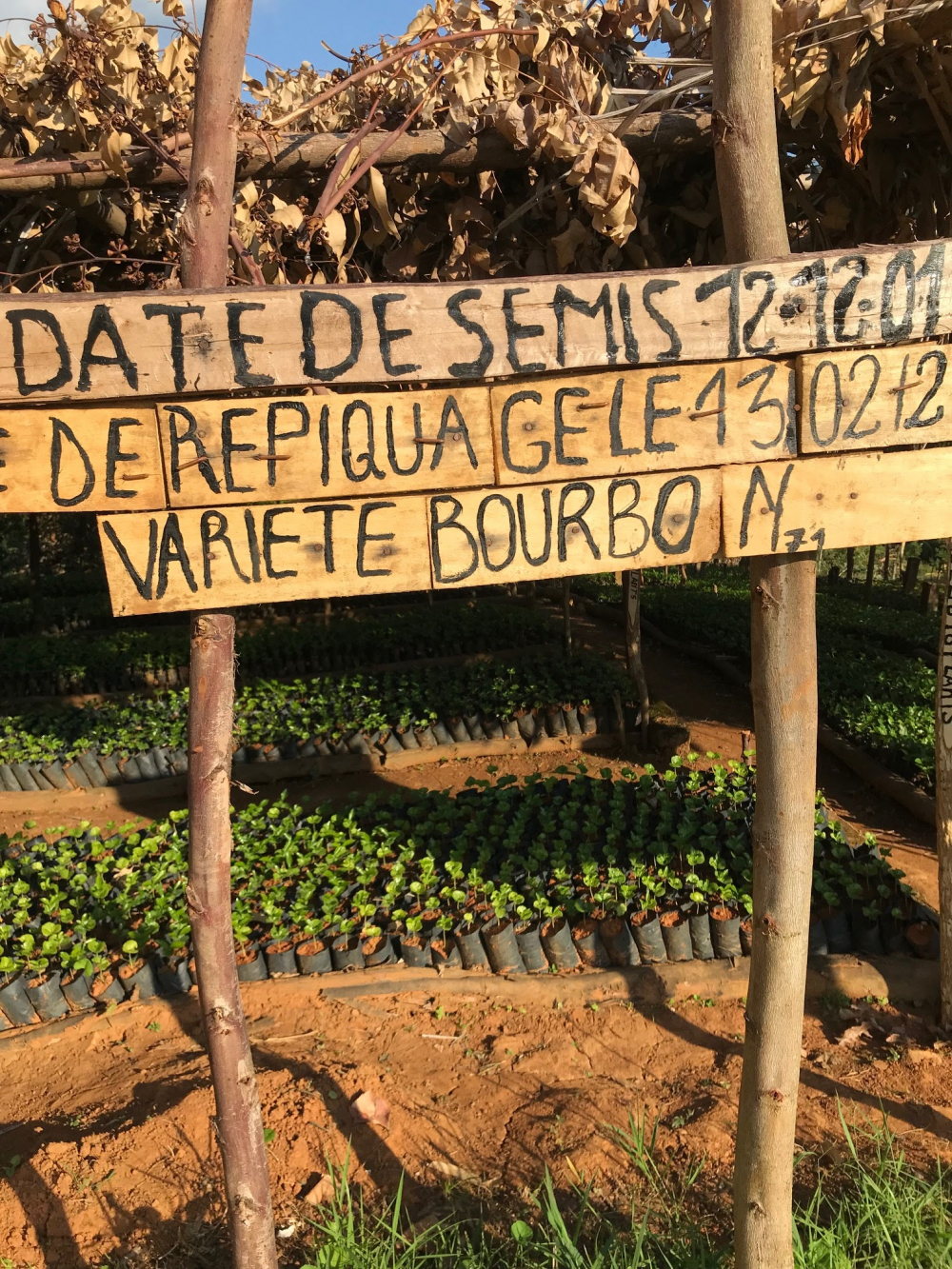
By region
The regions with an important coffee cultivation are Kayanza, Ngozi, Gitega and Muyinga, all situated in Northern Burundi. And Buyengero and Bururi in the south.
The OCIBU ambitions to implement the names of the regions next to the grades. The purpose is to define the best regions per grade and to allocate subsidies in order to improve the quality even more. This measure is still in a testing fase.
By Grade, new specifications 2020-21
|
Grade |
Screensize (inch) |
Retention in % |
Defects |
Brokens in % |
Moisture % |
Cup |
|
FW Ngmoa Mild |
18/64,16/64,14/64 or 10/64 |
Min 60%>=16/64 |
< 5 defects category 2 |
0 |
11.5 |
Min 80% |
|
FW AA |
18/64 |
92% of 18/64 |
Max 6% |
<= 0.5 |
11.5 |
Min 80% |
|
FW 15 |
18/64, 16/64, 15/64 |
Min 60%>= 16/64 |
Max 6% |
<= 1 |
11.5 |
Min 80% |
|
FW A |
16/64 |
80%>=16/64, max 20%<16/64 |
Max 8% |
<= 1 |
11.5 |
Min 80% |
|
FW PB |
>=12/64 |
Max 88%>=12/64 |
Max 10% |
<= 2 |
11.5 |
Min 80% |
|
FW B |
>=14/64 |
Min 88% of 14/64 |
Max 12% |
<= 2 |
11.5 |
Min 80% |
|
FW TT |
Rejects of FW AA; FW A; FW 15 |
Min 60% between 18/64 and 16/64 |
Max 35% |
Max 10 |
11.5 |
Average 60% |
|
FW T |
Rejects of FW B & FW PB |
Average 80% of 14/64 |
Max 40% |
Max 10 |
11.5 |
Average 50% |
|
FW Stocklot (T&M) |
All homogeneous lots with 11.5% humidity but not corresponding with above mentioned specifications and all rejects of above 5 % of overfermented coffees. |
|||||
|
FW Ngoma - SDL |
Specialty coffee indicating the coffee mill |
|||||
Processing
|
Picking |
Handpicking of the mature cherries only // the growers depulp manually |
|
Washing |
For the whole Arabica crop |
|
Fermentation (1) |
60 to 80% of the Arabicas |
|
Drying |
sundried |
|
Sorting (2) |
mechanical & electronic |
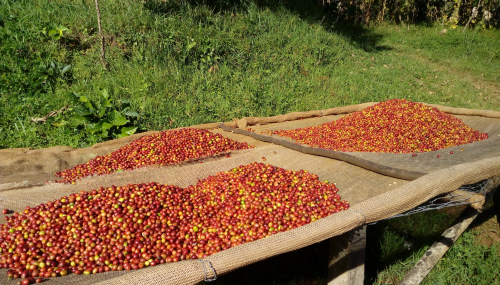
(1) About 60 to 80% of the Burundi coffee gets fermented at Washing stations in fermentation tanks. They are called "Fully Washed". The fermentation process lasts approximately 36 hours. The "Washed" coffees, 20 to 40% of the Arabica crop, are actually semi-washed (washed without fermentation, sun-dried).
More and more attention is given to improve the fermentation and drying processes for an increase in cup quality. In recent years Burundi is starting with the first exports of 'Speciality coffees'.
(2) It used to be that all the coffee produced in the country is milled by the large and modern OCIBU (governmental body) mills. Nowadays private entrepreneurs have developed dry mills service proposition in Gitega, Ngozi and Bujumbura to attend the parchment flow closer to production areas with quality service.
Nice to know
ARFIC is controlling all export coffees in cup, grading and moisture; maximum moisture content for the export is 11.5%
Coffee Environment
Prior to 2009 the entire coffee sector in Burundi was owned and managed by the Burundese government with limited private participation. That year the IMF and the World Bank forced the government to privatize and sell part of the Washing Stations to private investors with the condition that 25% of the social capital had to be reserved for local Burundese farmers.
In the past the entire crop was sold through an auction system ruled by the official body for coffee called the OCIBU (Office des Cafés du Burundi). Only members of the ABEC (Association Burundaise des Exportateurs de Café) had the right to participate and buy during these auctions. Exporters were buying the different coffee grades on a Free On Truck (FOT) Bujumbura basis and in Burundian franc (BUF). The coffee was then dispatched by them to the sea ports.
The liberalisation of the market previously controlled solely by the state, had little impact on the promotion of the Burundian coffee so far. Currently almost 20 registered exporters/buyers are sharing the exported volumes but they act more as buying agent than as actual exporter.
Since 2020, the longstanding “Sogestal” network which is a combination of public-private ownership of washing stations has been scrapped. In a sense, it has been nationalized by the government. All the Sogestal stations are now owned and managed by ODECA, the new central coffee marketing authority for Burundi, based in Bujumbura. ODECA has also launched a new auction system for export, in order to better control pricing and ensure USD funds stay in the country.
The competitive environment can be split in 3:
-
Private companies
-
Sogestals (société de gestions de stations de lavage): all the Sogestal stations are owned and managed by ODECA,the new central coffee marketing authority for Burundi, based in Bujumbura.
-
Consortium of Cooperatives: 33 coops, each coop owning a washing station and marketing their coffee together through Cococa.
Nice to know
Coffee is the first agricultural resource as well as the largest source of export revenues (more than 80% of total export revenues).
The lack of access to cash prior to crop has strongly impacted the volumes of the Sogestals and the Cooperatives. They claim having produced 50% less than estimated as they could not buy the cherry at WS level at the beginning of the crop. They are currently struggling to fulfill their shorts. Cash rich private companies on the other hand where able to secure more relative volume than previous years.

